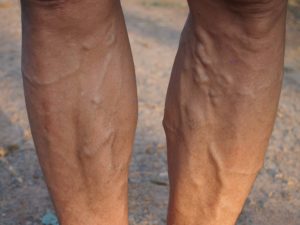Venous Insufficiency
What Is Venous Insufficiency?

- Varicose veins
- Leg swelling associated with heaviness and fatigue
- Skin changes (hyperpigmentation or eczema)
- Hardening of the skin associated with changes in skin color and swelling (lipodermatosclerosis)
- Healed venous ulcer
- Active venous ulcer
Venous Insufficiency Treatment Options
Venous Stenting
In the pelvis, there is a region where the deep venous system comes into close
proximity with the arterial system. In this area, the thick, blood-filled arteries
sit atop the veins and can sometimes put enough pressure on them to flatten
them, creating a blockage—similar to stepping on a hose. In order to restore
the structure of the veins, stents may be placed there as a permanent scaffold,
alleviating blood flow.
